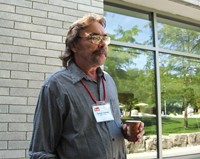Advertisement
Grab your lab coat. Let's get started
Welcome!
Welcome!
Create an account below to get 6 C&EN articles per month, receive newsletters and more - all free.
It seems this is your first time logging in online. Please enter the following information to continue.
As an ACS member you automatically get access to this site. All we need is few more details to create your reading experience.
Not you? Sign in with a different account.
Not you? Sign in with a different account.
ERROR 1
ERROR 1
ERROR 2
ERROR 2
ERROR 2
ERROR 2
ERROR 2
Password and Confirm password must match.
If you have an ACS member number, please enter it here so we can link this account to your membership. (optional)
ERROR 2
ACS values your privacy. By submitting your information, you are gaining access to C&EN and subscribing to our weekly newsletter. We use the information you provide to make your reading experience better, and we will never sell your data to third party members.
Catalysis
Reactions: ‘Metal-free’ reactions and transparency at ACS
March 18, 2022
| A version of this story appeared in
Volume 100, Issue 10
On “metal-free” reactions
The article “Doomed to Repeat” about “metal-free” reactions being catalyzed by trace amounts of palladium raises important and interesting questions as to how best to correct the scientific record in cases of research misconduct or genuine scientific error (C&EN, Feb. 14, 2022, page 20). I was surprised that there was no mention of the PubPeer database (pubpeer.com) as one potential solution to this issue. PubPeer is an online platform for postpublication peer review, providing a repository for comments, queries, corrections, and retractions of published scientific articles. It also covers some chemistry publications. A query with the search term “synthesis” yields 3,344 results, and “Suzuki,” 197 results, including the recently retracted article in Nature Catalysis by Hua-Jian Xu et al. that was the main topic of the C&EN article (2021, DOI: 10.1038/s41929-020-00564-z). PubPeer provides a useful browser plug-in that alerts the user to any article that has comments on PubPeer—a useful tool for alerting authors as well as research integrity groups of possible issues requiring investigation. A link to the retraction statement by Xu and coauthors appeared on the Nature Chemistry website, and the message “This article has been retracted and there is a comment on PubPeer (by: Elisabeth M Bik)” is posted within the search engines Google Scholar, Scopus, Web of Science, and Medline, but surprisingly not in SciFinder Scholar or PubMed. (PubPeer has no affiliation with PubMed or any journals.)
Alan Fairlamb
Dundee, Scotland
In her article “Doomed to Repeat,” Leigh Krietsch Boerner writes about the problem of reports of “metal-free” reactions turning out, on further investigation, to have been affected by trace amounts of palladium and asks, “How can research journals and chemists avoid making this mistake again?” I offer the following suggestion: all such manuscripts must contain the result of appropriate chemical analysis. The detection capabilities of modern plasma-source mass spectrometers are such that trace contaminants can be readily measured below microgram-per-kilogram concentrations. Depending on the sample matrix, Pd is not such an easy element to determine because of various isobaric overlaps, but a competent laboratory with appropriate instrumentation should be able to devise a method that would detect all metals in the various reaction media. For a journal to consider an article on “metal-free” chemistry, the manuscript must include the results of inductively coupled plasma mass spectrometric analysis, and the supplementary information should include the details of the analysis and how it was validated. The journal editor should ensure that one of the referees is competent to evaluate this aspect of the work.
Julian Tyson
Amherst, Massachusetts
Transparency at ACS
In mid-February, ChemBark resigned American Chemical Society membership as a protest, announced via Twitter. The issues are real, but personally, I’ve never understood quitting as a protest when the fix requires work. ACS is a large, complex organization, and the subscription fees, executive compensation, and governance are certainly issues worth considering with respect to our society’s mission. Mostly, I was drawn to ChemBark’s comment “lack of transparency in operations and governance” in the tweet. Reflecting on the routine editorials appearing in this magazine promoting diversity in chemistry, I think that comment highlights how we, as a scientific society, are far from those aims. In the nearly century and a half of ACS’s existence, the systemic racism, sexism, and structures that have marginalized various identities in society at large have become baked into the structure of ACS, and no pathway program will change that. We have complex rules that consolidate authority. A good example of this complexity is the different structures for how officers are elected in the various technical divisions, something I’ve observed from membership in several. Another good example is award committees. I recently served on a committee where I was the youngest member of an all-White, all-male group. Honestly, I am also a little unclear on how I came to serve. It may have been from entering my name in the Yellow Book, a process of which I was unaware until I chaired my local section.
In short, we have needless complexity and structure that protects privilege. It is built into our documents, bylaws, and rules. To be serious about supporting diversity, we need to be more transparent, and a tremendous part of that is in our governance, how it works, and how it is accessible to members. I am ready to roll up my sleeves and help, but ACS-wide structural revision needs to be led from the top.
Rory Waterman
Burlington, Vermont




Join the conversation
Contact the reporter
Submit a Letter to the Editor for publication
Engage with us on Twitter